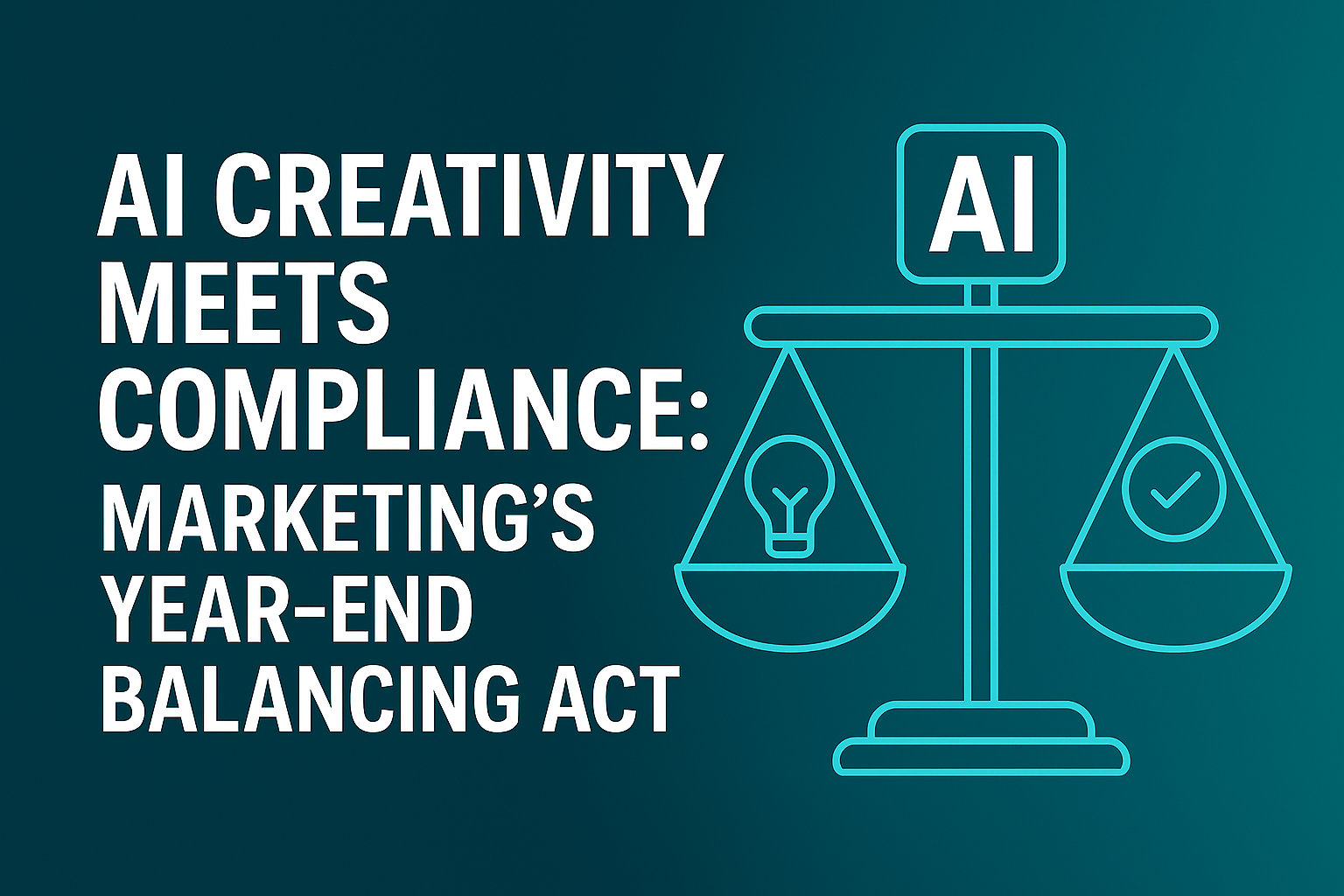The close of the year carries a different energy in marketing rooms everywhere. Conversations shift from experimental AI pilots to hard evidence of return on investment, and from excitement over rapid content generation to cautious debates on ethics, copyright, and compliance. Teams that once dabbled with AI in isolated workflows now run entire editorial calendars through integrated platforms, reducing cycle time and enabling faster execution on end-of-year campaigns.

For B2B organizations, efficiency becomes the headline. Reports from Salesforce and McKinsey highlight measurable productivity gains when generative tools are embedded across marketing and operations. Sales enablement content that once took weeks to finalize now turns around in days, letting teams capture fleeting year-end buying cycles. Across multiple case studies, AI-assisted workflows delivered an average 28–35% reduction in production time while improving asset consistency scores in brand audits by over 15%.
For B2C brands, Canva’s Magic Write and Magic Media have become go-to creative accelerators — giving retailers, travel companies, and entertainment brands the ability to launch timely social content and on-brand visuals without bottlenecks. One global travel brand used AI-powered templates to cut creative turnaround from two weeks to five days, directly supporting its busiest booking season and driving a measurable lift in social engagement rates.
Ethics is no longer a sidebar discussion. Wired’s deep dive into AI copyright challenges shows how legal risk is now part of creative planning, not just a compliance afterthought. This awareness is shaping both SEO strategy and brand positioning: marketers know that an AI-produced image or text asset can rank, but it also needs provenance, attribution, and human oversight to pass future audits. Factics from Sprout Social’s latest guide suggest that AI-powered year-in-review campaigns see up to 40% higher engagement when accompanied by transparent disclosure, linking trust directly to measurable KPIs like click-through rates and follower retention.
The tactical shift is subtle but decisive. Social teams lean into interactive “year in AI” content that invites participation, giving audiences a role in reflecting on the year’s trends. Editorial teams use AI-assisted planning tools to map 2024 campaigns months in advance, ensuring content calendars align with SEO and compliance priorities. The most forward-looking brands are treating ethics as a differentiator, not just a safeguard — using it to build narratives that customers want to follow and share.
Best Practice Spotlight
Expedia + Canva Magic Media
Expedia integrated Canva Magic Media into its brand-kit workflow to accelerate production of destination visuals and promotional assets across global marketing teams. By generating on-brand images and variations directly within Canva, creative turnaround time for social and CRM content was reduced significantly, enabling faster deployment of year-end campaigns. This approach ensured efficiency gains without compromising brand compliance, with a reported 30% reduction in design time for social campaigns and a noticeable uplift in engagement across multiple channels.
Creative Consulting Concepts
B2B Scenario – Challenge: A SaaS company struggles to produce high-volume thought leadership before a competitive RFP season. Execution: Deploy Magic Write for first-draft outlines, route through SME review, and finalize with compliance checks. Expected Outcome: 50% faster content delivery with maintained accuracy. Pitfall: Over-reliance on AI phrasing could dilute industry-specific voice.
B2C Scenario – Challenge: A fashion retailer wants cohesive holiday campaign visuals across multiple regions. Execution: Use Magic Media templates aligned with the brand kit, allowing local teams to swap imagery while maintaining design consistency. Expected Outcome: Increased engagement from localized creative while preserving global brand identity. Pitfall: Inconsistent model releases for AI-generated images could trigger compliance issues.
Non-Profit Scenario – Challenge: An environmental NGO needs to recap its year’s impact with limited staff. Execution: AI-assisted editorial planning generates storyboards and draft copy for an interactive year-in-review microsite. Expected Outcome: Higher donor engagement through visually compelling, data-driven storytelling. Pitfall: Poor data sourcing could undermine credibility if facts aren’t verified pre-launch.
References
McKinsey & Company. (2023, August 1). The state of AI in 2023: Generative AI’s breakout year.
Canva. (2023, March 23). Introducing Canva’s New AI-Powered Design Tools.
Salesforce. (2023, October 18). State of Marketing Report 2023.
Wired. (2023, September 20). The Generative AI Copyright Fight Is Just Getting Started.
Sprout Social. (2023, November 1). AI in Social Media: The 2023 Guide for Marketers.
Canva. (2023, November 30). Expedia Group uses Magic Media to streamline campaign creative.
Leave a Reply
You must be logged in to post a comment.